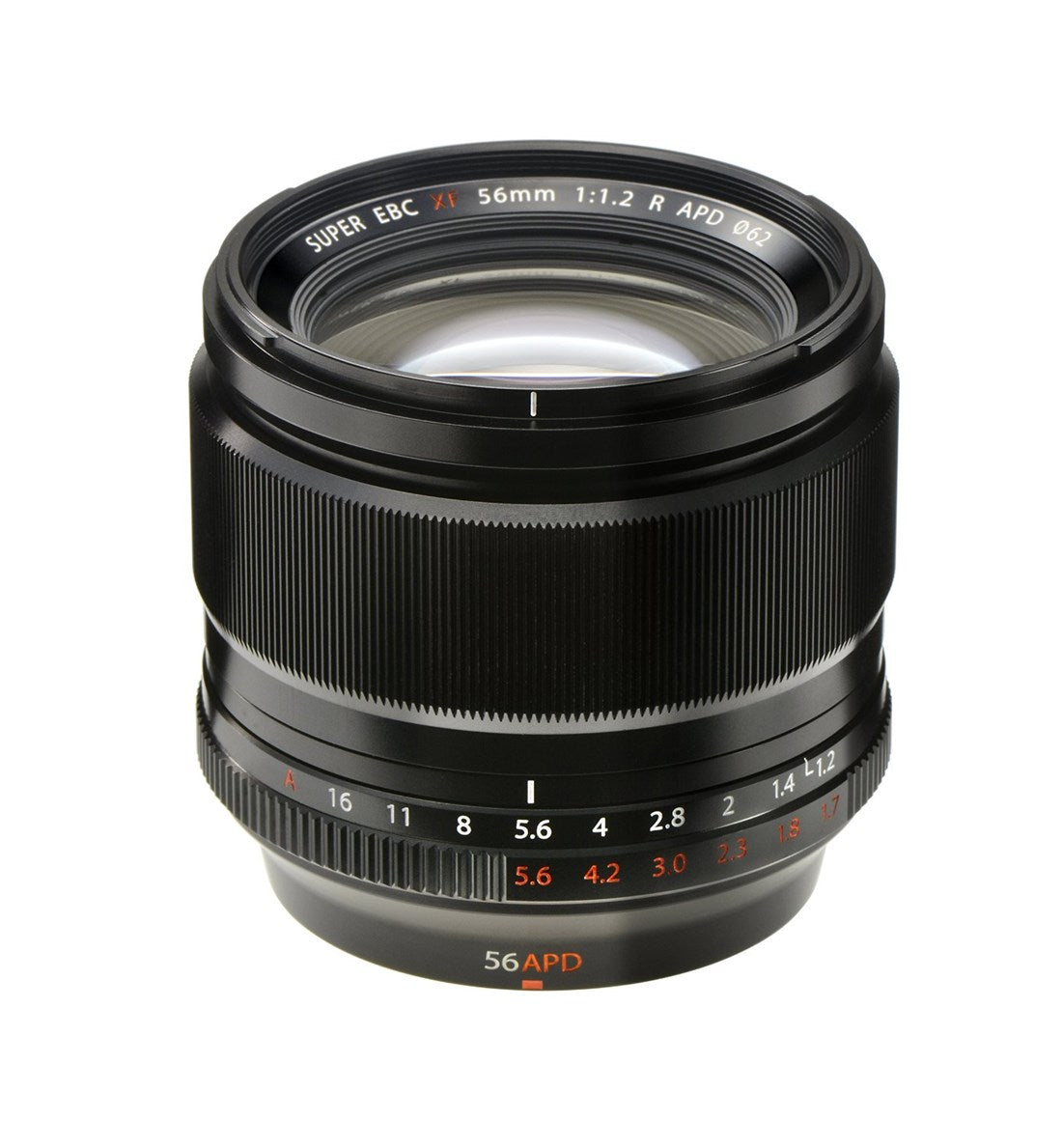Product Description
Fujifilm 56mm XF F1.2 APD Lens
A large-diameter medium-telephoto prime lens. The fast F1.2 lens produces creamy bokeh, while its 56mm focal length, equivalent to 85mm in 35mm film format, offers a comfortable shooting distance from the subject.
X-Series cameras have won a solid reputation for their faithful reproduction of skin tones and combining them with this lens delivers the ultimate portrait photography results. The built-in APD filter, the pinnacle of Fujifilm's nanotechnology, produces even smoother bokeh, making the subject stand out even more and enhances creativity, not only for portraits, but also on a wide range of other subjects.

NEW Built-in apodisation filter
The FUJINON LENS XF56mmF1.2 R APD offers the same brilliant levels of sharpness, even when shooting at F1.2 aperture, as the standard FUJINON XF56mmF1.2 R.
In addition, a brand new built-in apodisation filter smoothes the outlines in the out of focus areas. This combination of image sharpness and beautiful bokeh delivers portraits with a three-dimensional feel.
Lens construction
The lens contains eleven glass elements in eight groups, including one aspherical glass moulded lens element and two extra low dispersion lens elements. Spherical aberrations are corrected by the aspherical glass element to deliver high resolution at the maximum aperture setting. Chromatic aberrations are greatly reduced thanks to the combination of two extra-low dispersion lens elements and three cemented lens elements.

Film-like effects with the Film Simulation function
X Series interchangeable lens cameras are equipped with Film Simulation modes, which have been developed using Fujifilm’s knowledge from 80 years of manufacturing to deliver film-like colours and tones. Combining this lens with the Pro Neg. Film Simulation mode, which is specifically designed for portrait photography, reproduces beautiful skin tones.

High build quality and comfortable operation
The apodization filter delivers its best results at wider apertures. To enable wide apertures to be used even in bright environments, an ND filter is included that adjusts brightness in three levels. To indicate the apodizing effect, the lens features an aperture ring showing the effective F No. in red. The difference between the F No. and the effective F No. indicates the effectiveness of the apodization filter.
Both the focus and aperture rings are metal, plus metal is also used on the exterior of the lens body for a high-quality finish. The texture and torque on the rings makes for comfortable shooting even for delicate manual focusing.

























